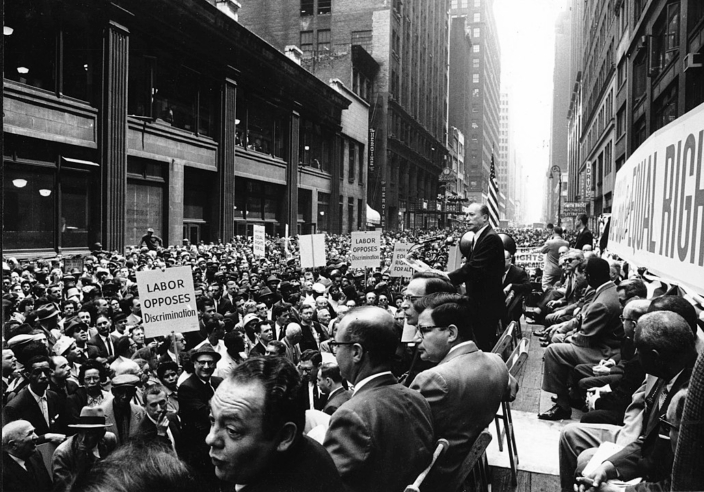Authors: Valerie Wilson and William A. Darity Jr.
This report, published in the Winter 2021 issue of Democracy: A Journal of Ideas and is adapted from a paper originally commissioned as part of the Economic Policy Institute’s Unequal Bargaining Power (UBP) initiative. The project was made possible because of a general operating grant from the Bernard and Anne Spitzer Charitable Trust and support from the William and Flora Hewlett Foundation.
Introduction: The assumption of a perfectly competitive labor market is central to some of the most widely accepted theories in the field of labor economics. On the demand side of this market structure are many firms seeking to fill identical jobs. On the supply side are many workers who possess the same set of requisite skills for a given job opening, all of whom have perfect information about wages and job conditions, and are able to move their labor freely, or without cost. The equilibrium price and quantity of labor—the market wage and level of employment, respectively—are those at which the amount of labor supplied by workers is equal to the amount of labor demanded by firms. Workers are paid the marginal product of their labor and in the long run, such a perfectly competitive labor market is theoretically at “full employment” since all who are willing to work at the market wage can find a job that pays that wage. Persistent racial inequality in unemployment and wages are outcomes that have been ignored, dismissed, and remain unsatisfactorily explained by conventional economic theory. In the first section we summarize the data describing racial disparities in unemployment and wages. Next, we review the prevailing economic theories used to interpret racial inequalities in labor market outcomes and present challenges to and shortcomings of those theories. Finally, we present stratification economics as a more appropriate framework for understanding the imbalance of power inherent in the social structures that perpetuate racial inequality in labor market outcomes.

